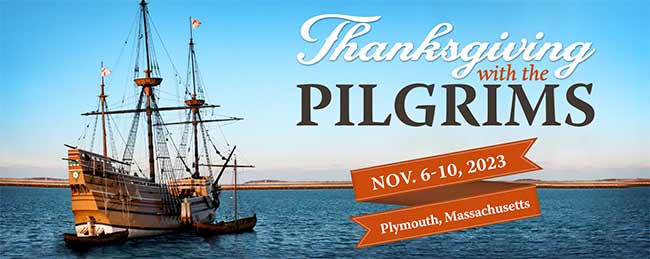
Sam Houston Becomes President
of the Republic of Texas,
October 22, 1836
 he colony and state of Virginia was the birthplace of nine Presidents. Seven were Tidewater or Piedmont Planters, one was a preacher’s kid, just passing through, and one became the President of a different Republic other than the United States. He was a Scots-Irish frontiersman whose providential history is almost unbelievable, and one of a most unpredictable and difficult life. Samuel Houston of Lexington, Virginia became the President of the Republic of Texas on the October 22, 1836. he colony and state of Virginia was the birthplace of nine Presidents. Seven were Tidewater or Piedmont Planters, one was a preacher’s kid, just passing through, and one became the President of a different Republic other than the United States. He was a Scots-Irish frontiersman whose providential history is almost unbelievable, and one of a most unpredictable and difficult life. Samuel Houston of Lexington, Virginia became the President of the Republic of Texas on the October 22, 1836.
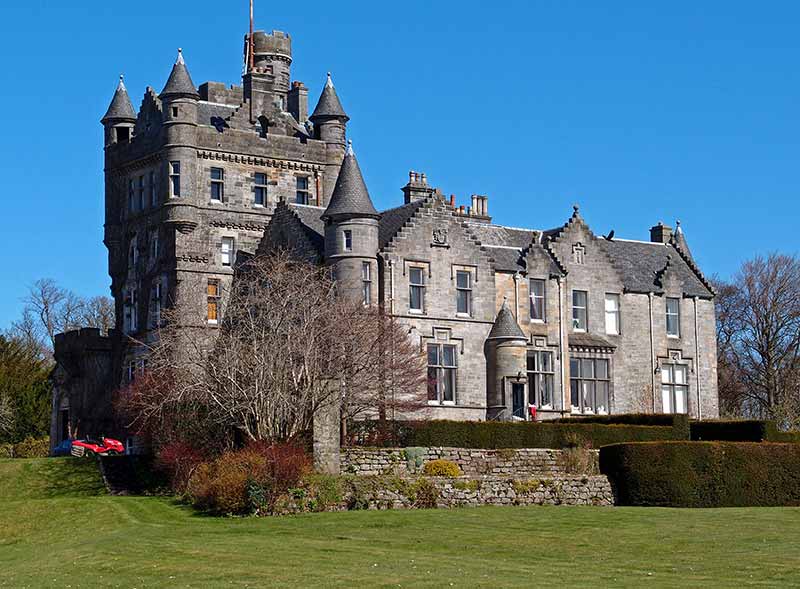
Houston House, Houston, Renfrewshire, Scotland
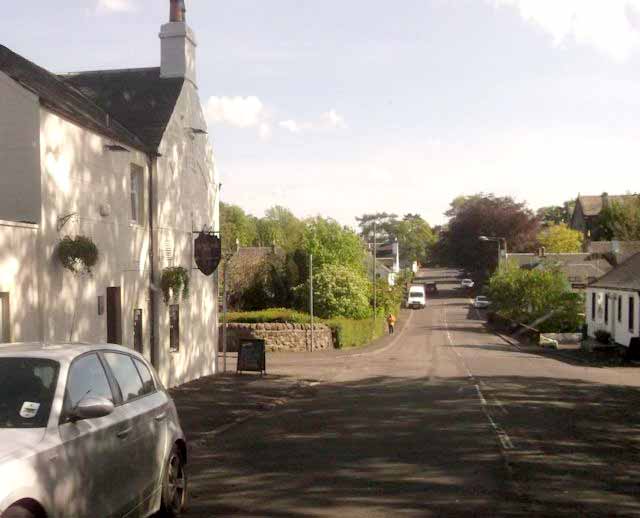
The village of Houston, Renfrewshire, Scotland
|
His ancestry dates to a knight and retainer of William the Conqueror, Sir Hugh of Padivan. His noble ancestor raced through a battlefield to save Malcolm, King of Scotland and was in turn given an estate and a coat of arms with two greyhounds and three ravens with the motto “In Tempore.” Sir Hugh’s estate became known as “Hugh’s Town,” and thus the surname of Houston was born. In America many generations later, now known as the “Scots-Irish”, Sam was born the namesake of his father and the fifth of six sons and three daughters. The hardy Presbyterian Houstons had moved down the great wagon road which ran from Philadelphia through the wilderness and up the Shenandoah Valley, settling near Lexington, Virginia. They were instrumental in founding Liberty Academy, later called Washington College. Sam’s father served as a captain in Daniel Morgan’s Rifle Brigade in the War for Independence, and no one became more independent than his son, young Sam Houston.

A monument marks the location of Sam Houston’s birthplace in Rockbridge County, Virginia
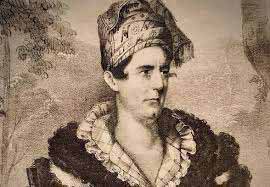
Houston during his days as a citizen of the Cherokee Nation
|
His mother loaded up two wagons and hauled her brood to live among relatives in Maryville, Tennessee after the death of Sam, Sr. in 1807. Young Sam was a tall, handsome thirteen-year-old, self-educated from his father’s library, and stubbornly independent and resistant to discipline and formal education. Upon settling in Tennessee, Sam absconded at the age of sixteen to the Cherokee nation (a people he admired), emulated their frontier lives, and adopted their cultural appurtenances. Guiding a plow or stocking shelves would never satisfy Sam Houston. The Cherokee named him Hiwassee, the Raven, in their cosmology a sign of good luck. He returned home every few months to “wheedle money from his mother” and buy gifts for his Cherokee friends.
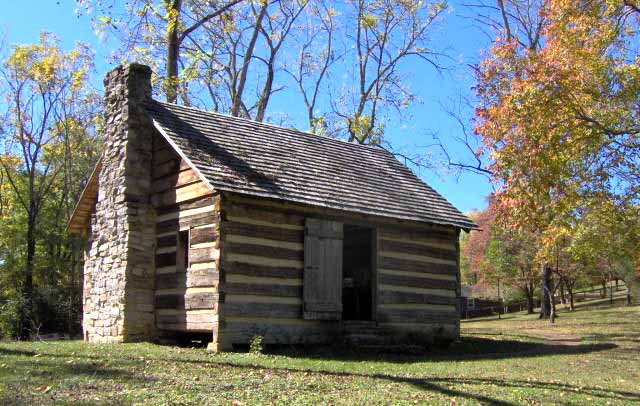
The one-room cabin school in Maryville, Virginia where Sam Houston briefly taught
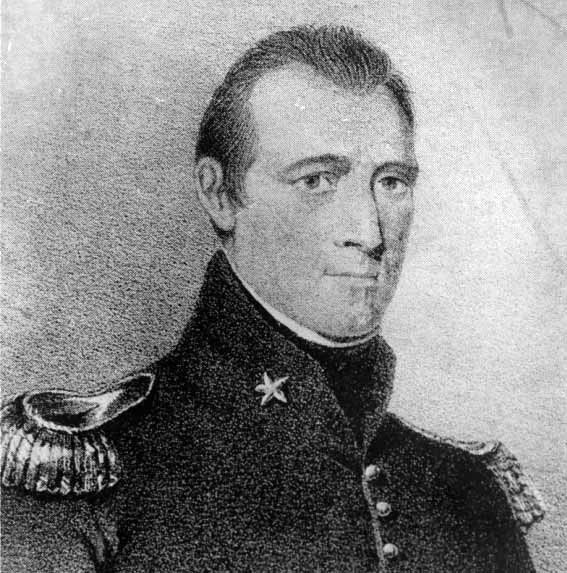
Houston in uniform
|
Now fluent in the Cherokee language, at nineteen he returned to Marysville and announced he was opening a school! When his pedagogical career faltered, and like his father before him, constantly in debt, Sam Houston joined the army. Quoting Shakespeare and dressed like a Cherokee, Houston entered service as a twenty-one-year-old sergeant, with his mother’s admonition to never disgrace his rifle or turn his back on an enemy. She gave him a gold ring with the word “Honor” etched on it, which he wore till his dying day when it was removed by his widow.
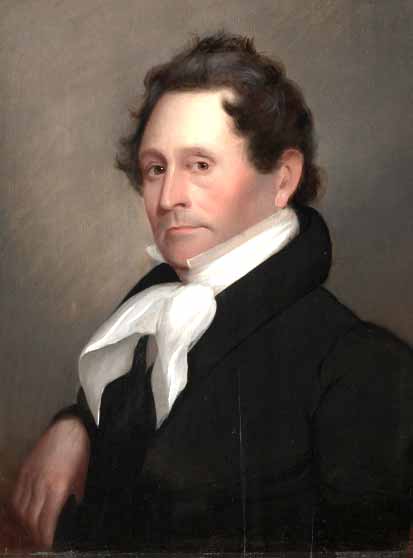
Thomas Hart Benton (1782-1858)
|
With an aptitude for drill and a natural-born ability for leadership, Sam entered the army as the War of 1812 heated up on the Tennessee/Alabama frontier. General Andrew Jackson called up Houston’s regiment for action against the Red Stick Creeks. Sam’s Colonel, Thomas Hart Benton—who also would play a significant role in the future history of the country—promoted the young man to lieutenant, noting him as a man “frank, generous, brave, ready to do and prompt to answer the call.” When his regiment was called to storm the first barricade in the final battle with the Creeks at Horse Shoe Bend, Alabama, Houston was first over the top with four other officers, three of whom were killed quickly. He took an arrow in the right groin, and compelled a fellow soldier to rip it out. The blood gushed. Jackson ordered a final assault, but told the young lieutenant to stay still. Houston, remembering his promise to his family that they would hear from him, disobeyed orders, and made the final charge holding the wound closed with his hand, and took a bullet in the shoulder. Barely alive, and septicemia setting in, he was hauled back the 275 miles to his mother’s home in Tennessee on a litter between two horses.
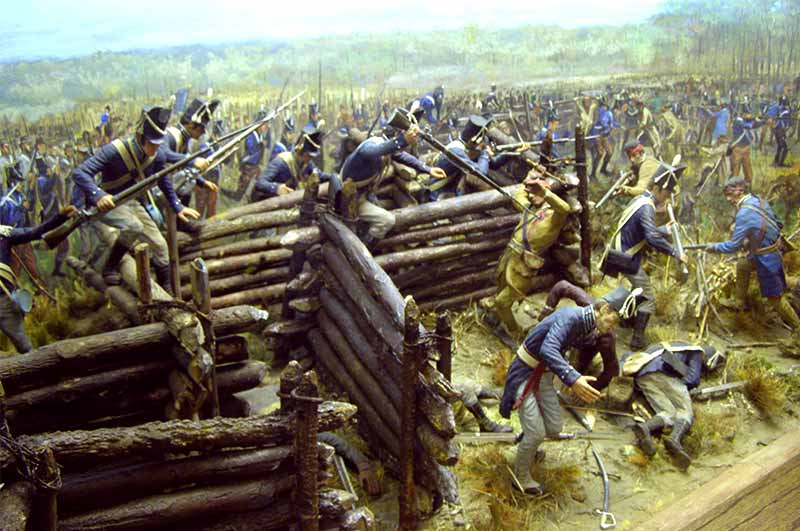
Diorama of the Battle of Horseshoe Bend
Upon his recovery, Sam Houston served as an Indian agent, began an apprenticeship with a judge in Nashville, and then opened a legal practice in Lebanon, Tennessee. His friend and patron Governor McMinn appointed the twenty-six-year-old lawyer a major-general in the Tennessee militia. By the 1820 census, his state was granted three representatives to Congress, and Houston’s political party, led by Andrew Jackson, enabled him to run unopposed for the 9th district seat. As an excellent public speaker and aggressive Congressman, Sam Houston won election to the governorship of Tennessee in 1827, from which office he helped Jackson get elected to the Presidency the following year.
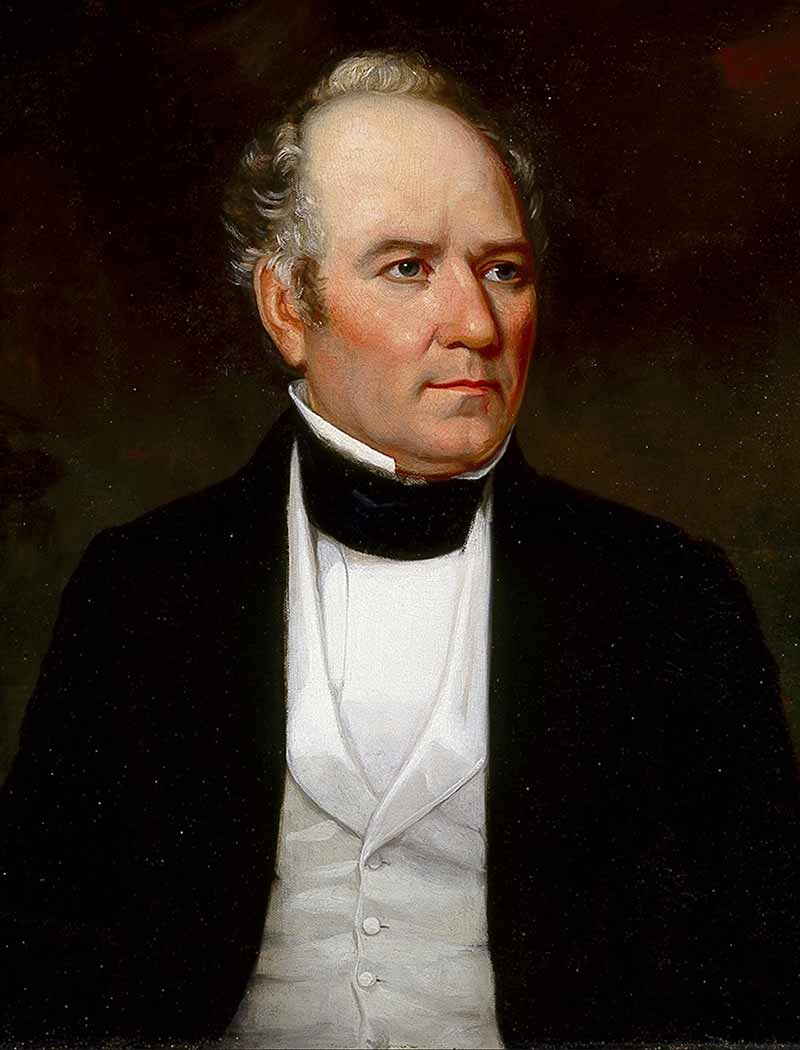
Formal portrait of Sam Houston (1793-1863)
Sam’s first marriage fell apart, and he abandoned politics to move to Arkansas and live among the Cherokee once again, where he was accorded tribal membership and became a negotiator between the tribe and the national government. After election to Congress once again, the occasionally volatile Tennessean was involved in an “affaire d’honneur” in which he beat unconscious with a cane a fellow representative, and left office once more for the west.

A signed portrait of Houston as Senator from Texas, 1859
In 1832, with rumors of alcoholism and uncontrolled temper following him, Sam Houston made the fateful decision to settle in Mexican Texas. He wrote a petition to their government for independence and supported Texas statehood. When the new President of Mexico, Antonio de Santa Anna invaded Texas with an army, Houston helped organize the resistance and to write up a provisional constitution. The story of the War for Texas independence is well known, as Houston led the Texian Army to victory and played a decisive role in creating a successful government.
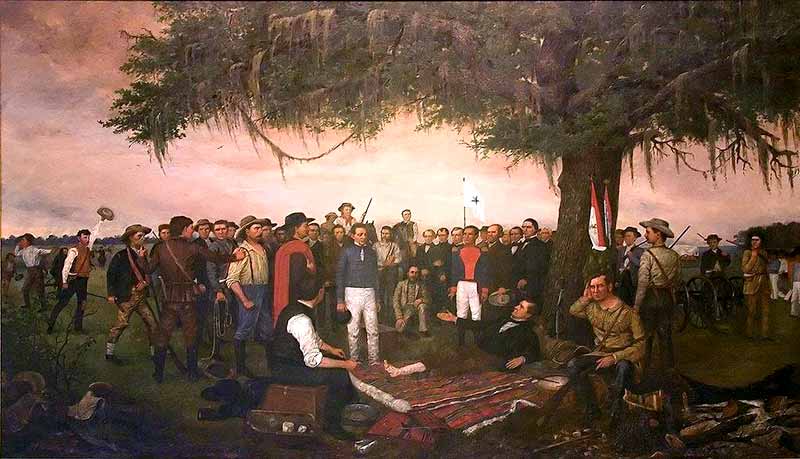
Mexican President Santa Anna surrenders to a wounded Sam Houston
after the Battle of San Jacinto, 1836
In subsequent years he served as the Lone Star Republic’s President and then as Governor of the State of Texas and United States Senator. The largest city in Texas—600 square miles—is named for the well-read but “uneducated” Scots-Irish boy from Virginia. He overcame his weaknesses over a lifetime of struggle, and his accomplishments certainly would have made Sir Hugh proud of his descendant. The Providence of God often seems to be an inscrutable puzzle when occurring, but a fascinating wisdom when we reflect on the past.
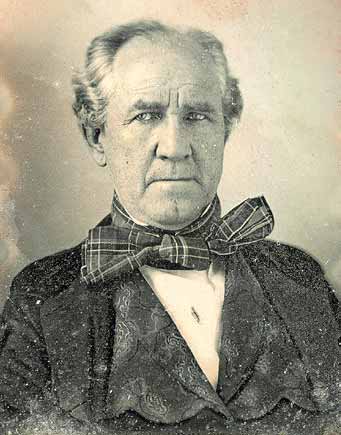
Sam Houston in 1850
|
|
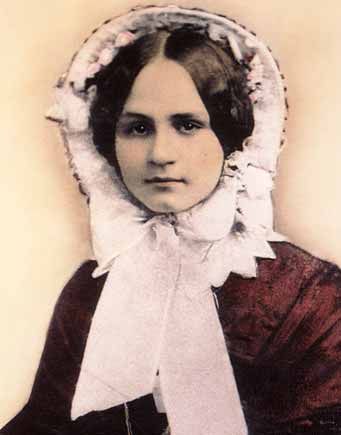
Margaret Lea Houston (1819-1867), third wife of Sam Houston, married in 1840 when she was 21 and he was 47
|


We recommend for further study, Sam Houston by James L. Haley (2002).

Image Credits:
1 Houston House, Scotland (wikipedia.org)
2 Village of Houston, Scotland (wikipedia.org)
3 Birthplace of Sam Houston (wikipedia.org)
4 Houston as a Cherokee citizen (wikipedia.org)
5 Schoolhouse in Maryville, VA (wikipedia.org)
6 Houston in uniform (wikipedia.org)
7 Battle of Horseshoe Bend (wikipedia.org)
8 Thomas Hart Benton (wikipedia.org)
9 Sam Houston (wikipedia.org)
10 Texas Senator Houston (wikipedia.org)
11 Santa Anna Surrenders (wikipedia.org)
12 Houston in 1850 (wikipedia.org)
13 Margaret Lea Houston (wikipedia.org)
|






